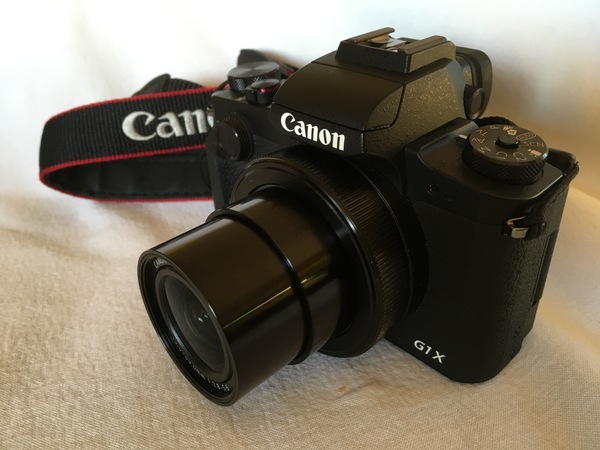The Early Years
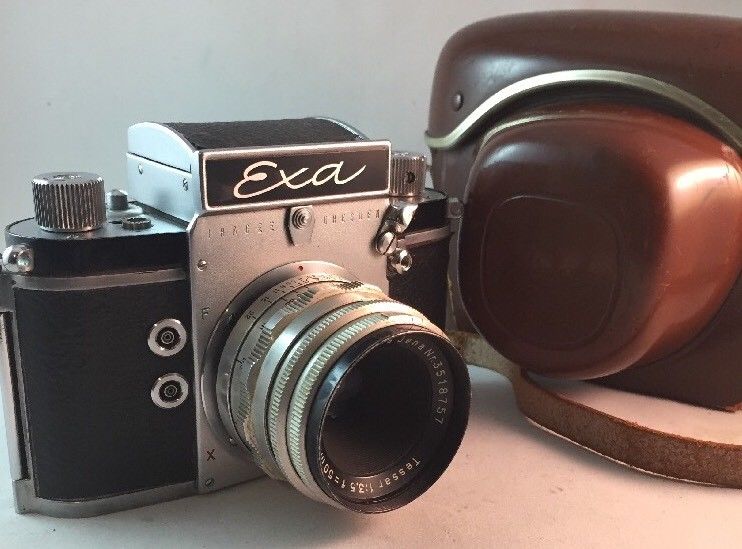
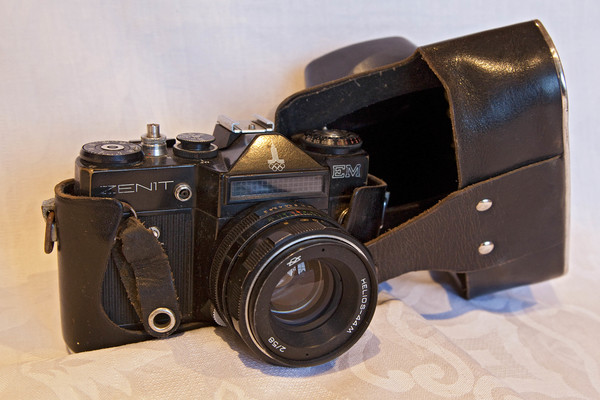
I became irritated by the size and weight of the Zenith and mum's old Rollei B35 had become available as she had invested a huge amount in a new Canon AE1. The Rollei was the antithesis of the Zenith in virtually every respect. I started using it from late 1979 and it proved to be a reliable accompaniment on my trips. It was capable of producing some superb images for such a diminutive size. Its main limitation was the relatively short focal length of the lens. This meant that you had to compose very carefully to avoid the subject being a distant spot in the middle of the image! I continued to use Kodachrome 64 in the Rollei and these images have survived well, but for some fungus. The only issue with the camera was that there was a couple of tiny particles of foreign matter within the structure of the lens. Occasionally these would spoil a picture appearing as a small dark spot within the image; usually in an obviously conspicuous place like the middle of a yellow front end! However, contemporary scanning and judicious use of the Photoshop clone tool has enabled them to be eradicated!
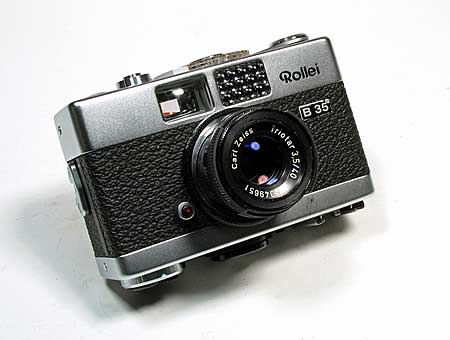
The Middle Years
In the summer of 1980, I left school and went to college in Trowbridge. One of the A-Levels I chose was photography. After a few weeks, I realised that my Zenith EM and the Rollei B35 cameras were not up to the job of what was expected of them. With help from my family, I used savings from my part-time work to buy a brand new Pentax MESuper. I was so excited when I picked this up from the London Camera Exchange shop in Bath. I immediately loaded it with a roll of Ilford FP4 and headed for Bath Spa station! The Pentax was light-years ahead of all the other cameras that had gone previously, and the quality of the images taken improved dramatically. With its fast 50mm prime lens (f1.7) and its 1/2000sec. maximun shutter speed, its light and compact size (very different to the Zenith) made it become an ideal spotting companion. Soon afterwards I added a small flash and a 135mm telephoto lens. Unfortunately, I cannot remember what make it was.
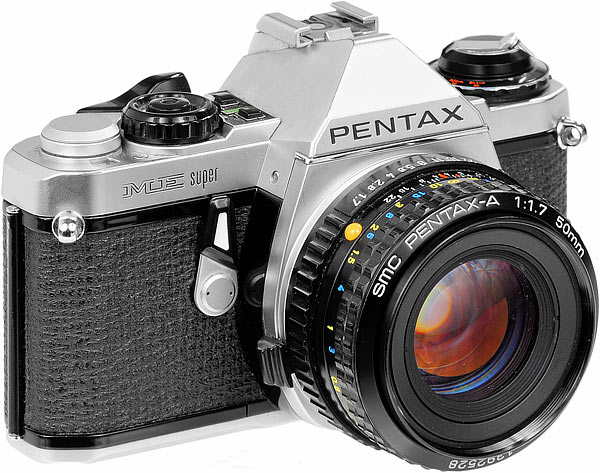
For a short time in the mid 1980s my mum permitted me to borrow her fantastic Canon AE1 and Vivitar zoom lens similar to the example shown in the image to the right. This camera was a lot bulkier and heavier than the Pentax but the attraction of using a powerful zoom lens meant that I got over this issue! The Canon was a superb camera that gave absolutely spot-on images in all conditions. Love me as she did, my mum did claim her camera back so the number of images that I took with it was limited.
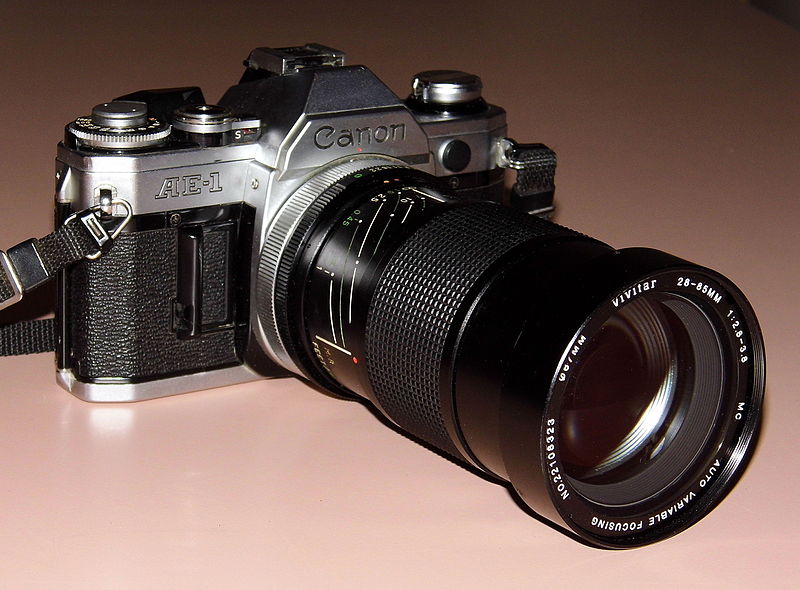
Sometime in 1984 I was walking past the London Camera Exchange in Cheltenham and saw a smart used black-bodied Minolta XG9 in the window with a small mid-range zoom. I had my MESuper with me so went in and did a deal. I seem to remember that no cash changed hands in either direction. This spontaneous move was unusual for me as I am normally the sensible one who reads reviews and weighs things up before lashing out the cash. Looking back now it was probably a wrong decision. I hadn't realised that the Minolta had a major weakness, namely that in manual mode, there was no metering function. Anyway, I put up with this, having learnt my lesson and got on with using it. It actually proved to be a very reliable performer and despite its weakness produced very well-exposed images. Unbelievably, this was actually my last new non-digital SLR camera. Subsequent cameras were all of the 'compact' types as my photographic priorities began to change.
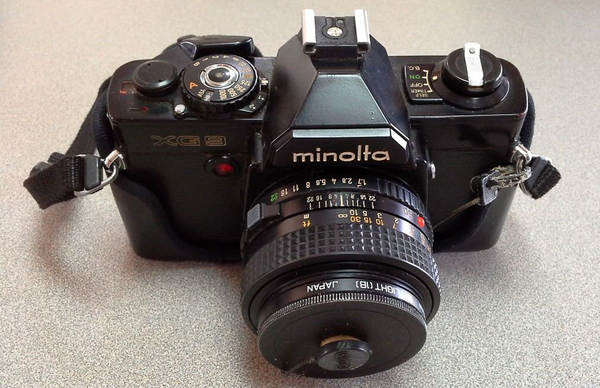
The Early Digital Years
Digital photograph arrived for me in 1999. My employer supplied me with my first digital camera, a Kodak DC240i in Bondi blue that matched my iMac G3. It was an absolute revelation and I was hooked from that point with the realisation this was the way I was going to go with photography. The Kodak camera was pretty useless at taking anything in motion and files were small recorded on its 1.3 megapixel sensor. I persevered for a while but wanted something better. Technology was developing digital cameras a rapid rate but decent ones still remained astronomically expensive. I owned a very capable Olympus Camedia C2040 for a short time that I sold to a friend in favour of a Fiji Finepix S602 zoom. This was a feature-rich camera with what I really wanted, namely a full functional shutter priority mode just like a film camera. It had a SuperCCD III 3.1 megapixel sensor that represented a great step forward in terms of sensitivity enabling much lower light capabilities. This made railway photography a decent proposition again and the camera went straight into use. It had a good zoom range and produced reasonable quality images. The only issue was that the photographs had a strange hue to them and were oversaturated as well as being a little soft but Photoshop has been able to take care of these issues. Handling was acceptable but it did need a degree of precision and planning to set a shot up that did not always go quite to plan! However, the camera performed well and soon went to a new home with my spotting companion Andy as I was now firmly on the 'digital upgrade conveyer'!
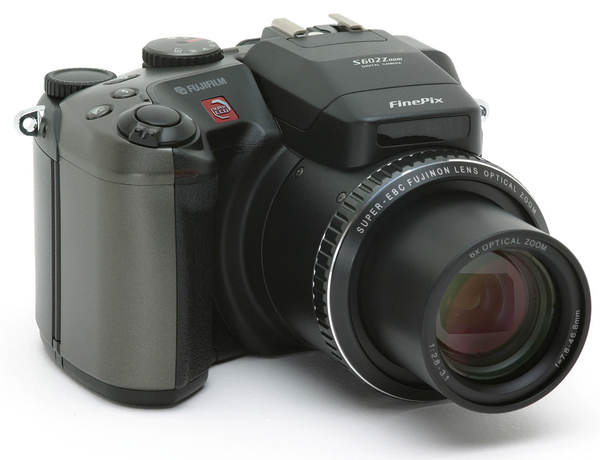
Much as I appreciated the technology contained in the new generation of digital cameras I could also see that the leading companies were developing high-end SLR equipment akin to traditional film cameras. Not only did they look very similar but they also handled and behaved in the same manner. So I decided to save up and took the plunge investing in a Canon D60 (not be confused with the much later 60D). This was a heavy camera for its size but was built reassuringly well and handled in a very familiar fashion. This camera served me well making me realise that a digital SLR was the only way to take good photographs in the manner that we all remember from the relatively recent past of film photography. It produced strong images from the 6.3 megapixel CMOS sensor but for a lot of noise in dark conditions. Revisiting these images today has required a lot of work in Photoshop and Neat image to clean things up but the general improvement in quality and composition is marked when compared to what went previously. It was also the first camera that enabled me to take photographs in RAW format, something that I have continued to do so ever since. It had a strange trait that I never got to the bottom of, the sensor was constantly plagued by dust causing irritating spotting on images that required regular trips to my local camera shop for cleaning; remember this was way before the days of automatic sensor cleaning!
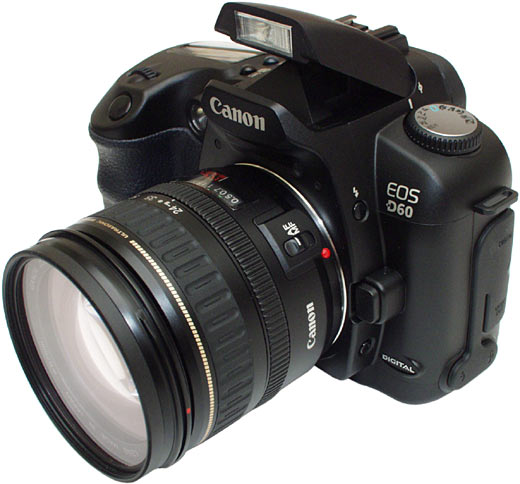
Whilst I loved the D60 and it did everything that I wanted it was just too heavy coming in at over a kilogram with a lens fitted meant that it became tiresome taking it around actually giving me neck ache! I sought something lighter so in early 2007 I decided on a Canon refurbished 350D Rebel XT (whatever that last bit meant?) paired to a superb Canon EF 28-200mm. This was an 8-megapixel machine that was a whole lot lighter than the D60 but was not built to the same quality. It was much more plasticky and after some time in use some of the detailing began to wear away and it did look a little tatty by the time it came to sell it. Notwithstanding its physical properties, it performed well and showed a marked improvement in the control of noise. The 350D stayed my loyal companion for some four years.
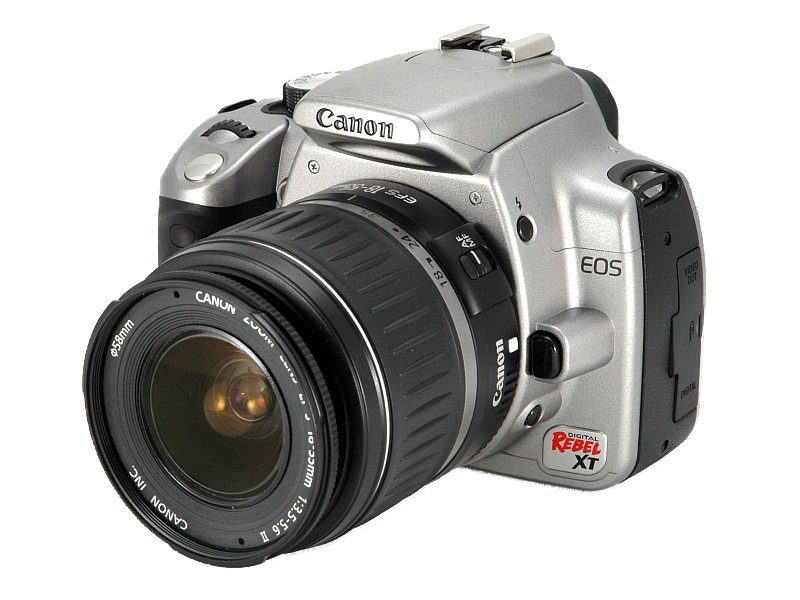
The Full Frame Years
Like the yearning that people have developed in recent years, that's led to a bit of a renaissance for vinyl records, I wanted to go back to the feel of good old 35mm! So, in early 2011 I decided to lash out and buy my first full-frame DSLR. As I had started to use Canon equipment in recent years, I chose the 5D (now referred to as the Classic). Naturally, it came with Canon’s EF 24-105mm IS zoom. The 5D is a big and heavy camera but has been capable of producing outstanding results in many lighting conditions. It represented a huge jump in image size as the 12.8MP sensor was significantly larger than the 350D. It did have some shortcomings, the maximum iso of 3200 was still a bit limiting at times and there were still noise issues at this end of the range. However, I felt right at home using a digital camera that handled and behaved just as a 35mm did all those years ago! I must make further mention of the Canon EF 24-105 zoom lens. Yes, it suits the camera well and I am now on my second one, but, don’t be fooled by the rave reviews, this lens has issues. Its main fault is major vignetting problems worse at the wider angles but even at 50mm, it is evident. Using Photoshop’s Bridge vignetting adjustment tool usually sorts it out. There is also a considerable amount of distortion at the edges of the images. This constantly manifests itself when on the lineside where there are verticals such as electrification masts. They take on a distinct curve and again Photoshop comes to the rescue using it transform-warp menu. The other issue with the lens is that the zoom barrel moves too easily. When the camera is around your neck the barrel creeps down which is irritating!
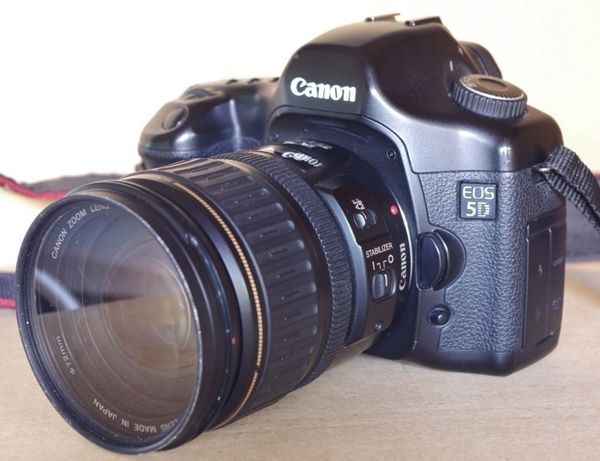
Yes, I know this is not a full-frame camera but it supplements them, so it’s included in this section. I bought this canon G1X to be used when the 5D was not a practical proposition. For example, it is used when my wife and I have one of our days out to London. It has also been used on holiday when, to be frank, I can’t be bothered to take the big Canon that would compromise the weight allowances quite negatively! The G1X is a full-function compact with a 14.3MP 1.5inch sensor. There is very little noise, even at high ISO settings and Neat Image is more than capable of dealing with it. However, this camera frustrates me at times with it’s ability to take-over shutter priority speed shooting on my behalf! Also, the lens has one or two limitations. Finally, whilst battery life is acceptable, but when they die you have a no advanced warning, they got from full charge to a flashing red battery in a about a minute! At the time of writing, I am considering upgrading to a G1X MkIII, we will see!
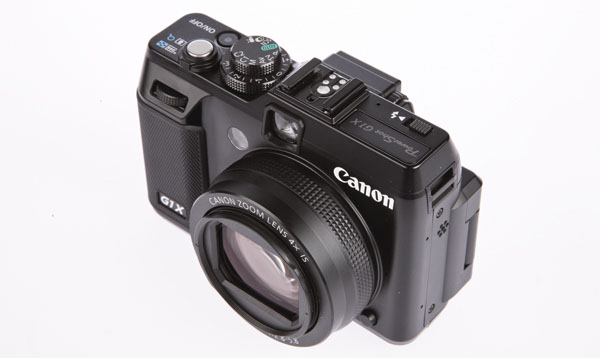
I decided to upgrade to a Canon 5D Mk.II in early 2016. Canon made a series of improvements to 5D, the main one being the ability to shoot full 1080 video. This is a function that I have used on occasions but find it cumbersome in terms of the focusing. Canon also provided a greater range of ISO settings, allowing me to confidently use the higher end ones with the threat of noise spoiling the image at a minimum. I am using my second Canon EF 24-105mm zoom that has exactly the same issues like the ones that I have described previously. I am also expecting to send it away for repair anytime soon to have the ribbon replaced as the failure of these is a constant problem. I am still using the Sigma 70-200 f2.8 lens that works really well on the full-frame camera. It produces good quality images that are little softer than those taken with the Canon lens. I also find that the colour is a little lacklustre but a tweak of the saturation adjustment sorts that out. But for the price, the Sigma is a great and fast lens. I also have purchased a Canon 50mm prime lens, the f1.4 version. This is a simple and excellent lens that I love using. Using this lens on the 5D is real 'old school' and is about as close as you can get to the traditional 35mm photography of my youth!
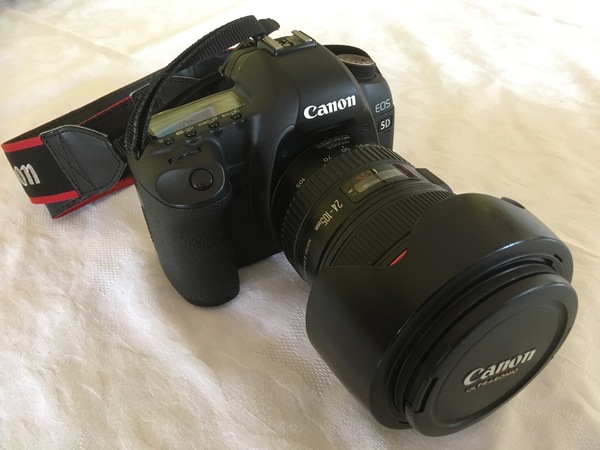
The Full Frame Years continues.....
In September 2018 I had a rash moment and, after picking them up in shops and playing with them on repeated occasions, I bought a used Canon GX1 Mk.III. It was three months old and had hardly been used. I am writing this some six months after this purchase and can say that I am absolutely delighted with the camera. In fact, the 5D has seen very little use since, which has been a surprise. The new compact sits very small in the hand making it an ideal companion when I am out and about. It is feature full with an ability to take images in very low light conditions with minimal noise that is simply staggering. This is largely down to its 24MP APS-C CMOS sensor that is the same size as in the larger SLR. To say that I am in love is a slight overstatement, the camera has one issue that is a bit of a letdown and that is its lens. Firstly, it has a 24-72mm equivalent zoom that is not really long enough. The second issue is that the lens has a number of distortion issues that need correction in Photoshop. This is a particular problem that manifests itself when there are verticals towards the edge of an image that needs straightening using the Photoshop warp transform tool. As soon as Canon release a new version of the camera with a more powerful and better lens I will put my deposit down! Does anyone want to buy a 5D?
